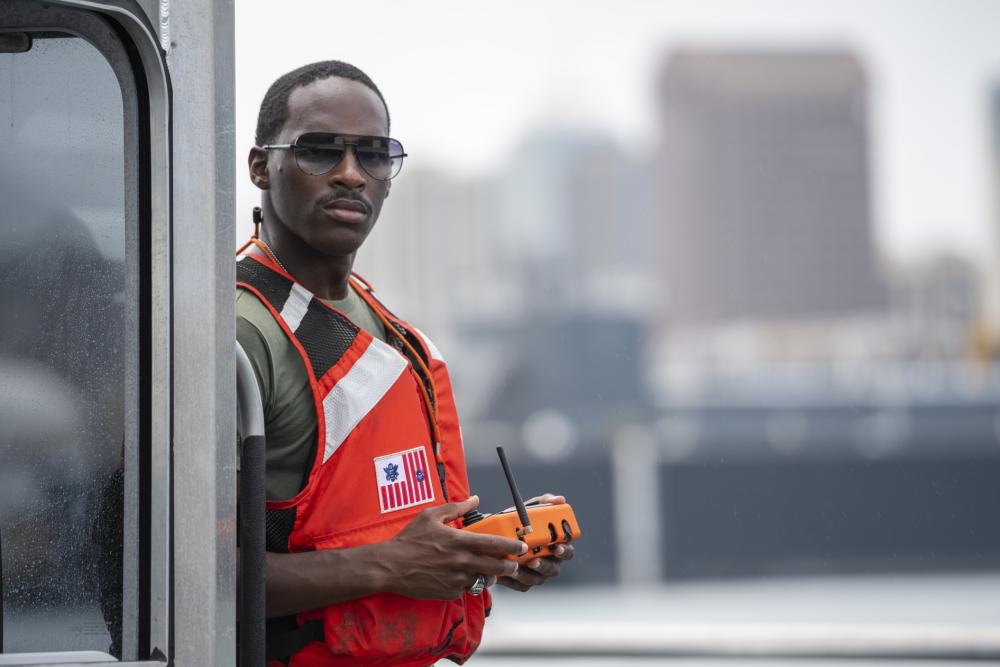A Dallas, Texas, native serves with the Fleet Survey Team (FST) collocated with the Naval Oceanographic Office and the Commander, Naval Meteorology and Oceanography Command (CNMOC) at Stennis Space Center, Mississippi.
Petty Officer 3rd Class Jerrell Hamilton, a 2002 Skyline High School graduate, joined the Navy six years ago as an aeographer's mate (AG).
AGs collect, measure, and analyze the elements of the physical environment (land, sea, air, space) and land/sea interface. They synthesize a vast array of oceanographic and meteorological data, and in situ observations and measurements to produce forecasts and warnings in support of safety of flight and navigation, as well as Naval/Joint Operations and missions. AGs demonstrate expertise in Hydrography, Geospatial Information and Services (GIS), datum issues, and Tactical Decision Aids (TDA). They combine knowledge of the operating environment with a thorough understanding of warfighting capabilities to assess and predict environmental impacts to friendly and enemy platforms, sensors and weapon systems.
When forces are armed with detailed descriptions of the environmental conditions they could face, operations have a greater chance of being safely and efficiently executed. FST gathers the needed information via timely, self-contained hydrographic surveys in response to combatant commanders’ requests. Frequently, these requests are for areas where Navy operations will take place or where chart accuracy is uncertain. Team members can quickly deploy to areas around the world outfitted with equipment to perform surveys from its own small boats or various boats of opportunity.
CNMOC directs and oversees more than 2,500 globally-distributed military and civilian personnel who collect, process and exploit environmental information to assist Fleet and Joint Commanders in all warfare areas to make better decisions, based on assured environmental information, faster than the adversary.

A key element of the Navy the nation needs is tied to the fact that America is a maritime nation, and that the nation’s prosperity is tied to the ability to operate freely on the world’s oceans. More than 70 percent of the Earth’s surface is covered by water; 80 percent of the world’s population lives close to a coast; and 90 percent of all global trade by volume travels by sea.
With more than 90 percent of all trade traveling by sea, and 95 percent of the world’s international phone and internet traffic carried through fiber optic cables lying on the ocean floor, Navy officials continue to emphasize that the prosperity and security of the United States is directly linked to a strong and ready Navy.
According to Chief of Naval Operations Adm. Mike Gilday, four priorities will focus efforts on sailors, readiness, capabilities, and capacity.
“For 245 years, in both calm and rough waters, our Navy has stood the watch to protect the homeland, preserve freedom of the seas, and defend our way of life,” said Gilday. “The decisions and investments we make this decade will set the maritime balance of power for the rest of this century. We can accept nothing less than success.”
Serving in the Navy means Hamilton is part of a team that is taking on new importance in America’s focus on rebuilding military readiness, strengthening alliances and reforming business practices in support of the National Defense Strategy.
As Hamilton and other sailors continue to perform missions, they take pride in serving their country in the United States Navy.
During his naval career, Hamilton has received the Information Warfare, Air Warfare and Surface Warfare insignias. Additionally, he was awarded the Flag Letter of Commendation and obtained multiple qualifications across different platforms, and deployed in 2017 as part of Operation Inherent Resolve aboard USS Nimitz.
Hamilton graduated in 2009 from Everest College with a degree in criminal justice.